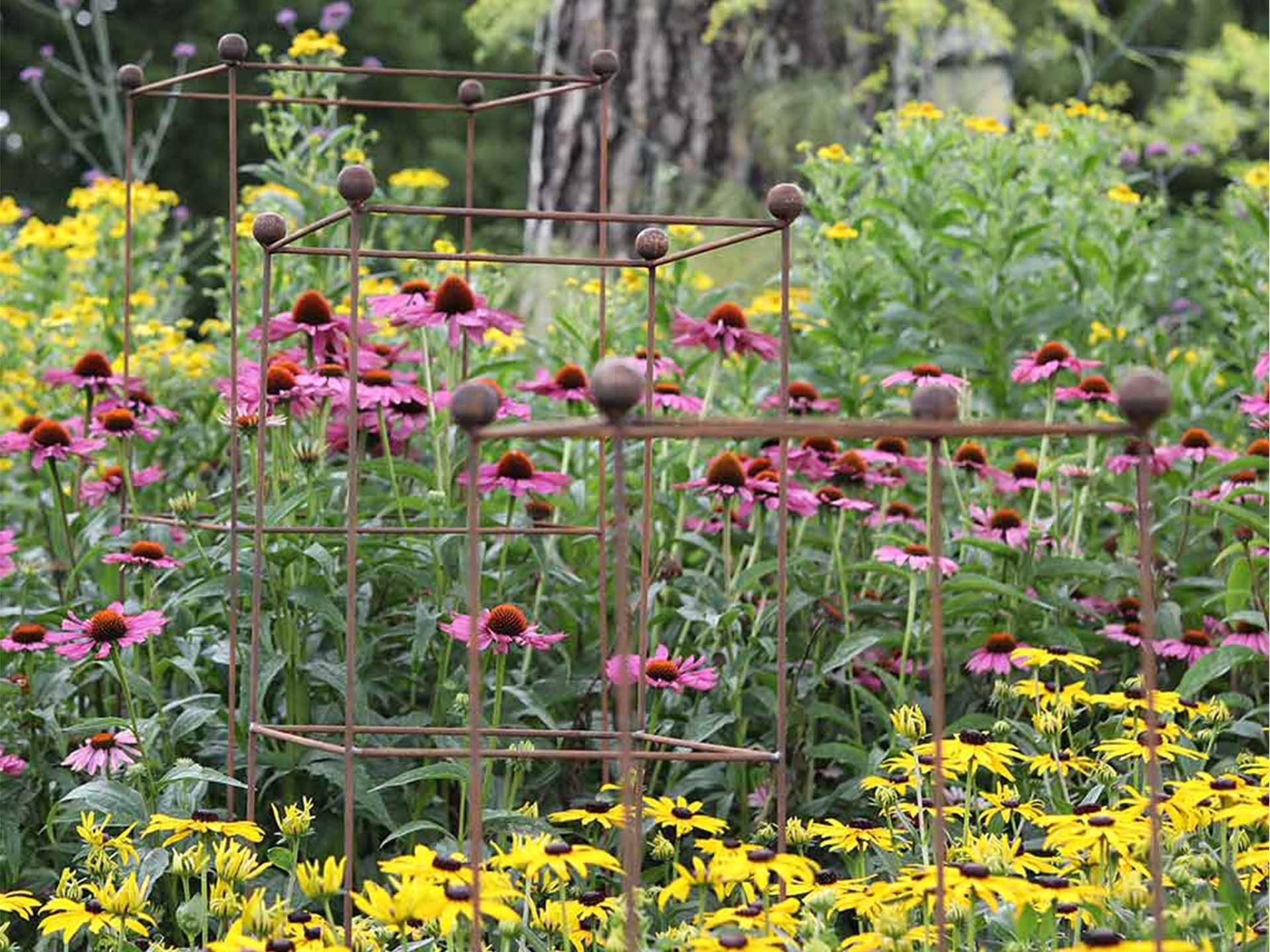Garden trends 2024 – what’s going to be big this year?
Sustainability is a common theme in garden trends for 2024 - from no-dig planting, to perennial pollinators and xeriscaping
If there is one common theme threading through garden trends for 2024, it’s the environment. Slow and natural gardening techniques are embracing everything from no-dig gardens to homemade compost, perennial planting and “edimental” borders. There’s even a call for smaller lawns and lawn-less gardens to preserve water and encourage wildlife.
While there’s a nod to xeriscaping and introducing drought-tolerant plants into your garden, you’ll also need to be mindful of the heavy rains we’ve been experiencing and create proper runoff so that your plants do not get drenched and their roots rot. Looking ahead to the RHS Chelsea Flower Show gardens, they are pledging to be the greenest and most sustainable yet.
Garden rooms and outdoor living continues in popularity, with a growth in outdoor kitchens, but experiences have been taken up a notch with beautiful natural swimming ponds and alfresco bathing. Advances in garden tech in 2024 can help you with planting, landscaping and even water management.
Edimental planting and no-dig gardens
Regenerative gardening is on the up and is a practise that thinks about the whole ecosystem from the soil up. After all, healthy gardens and plants depend on healthy soil. The concept of a no-dig garden does what it says and ditches the spades, forks and rotavation in favour of planting directly on organic matter like homegrown compost. No-dig gardens improve soil structure as they don’t destroy natural drainage patterns and fungal networks.
A garden trend in 2024, when it comes to what to put in the beds has been coined as “edimental”. Meaning edible and ornamental, combining beauty and functionality with delicious produce in your garden. For your vegetable patch, rainbow chard, artichokes, and aubergines add interest and colour, and you can bring in fruit bushes and trees and a beautiful herb garden. Edible flowers, like nasturtiums, pansies, elderflower and hibiscus are gaining in popularity for herbal teas and garnishes. The Glutenous Gardener does a brilliant range of seed kits and grow bars with everything from collections of medieval herbs, red hot chillies to a cocktail garnish kit.
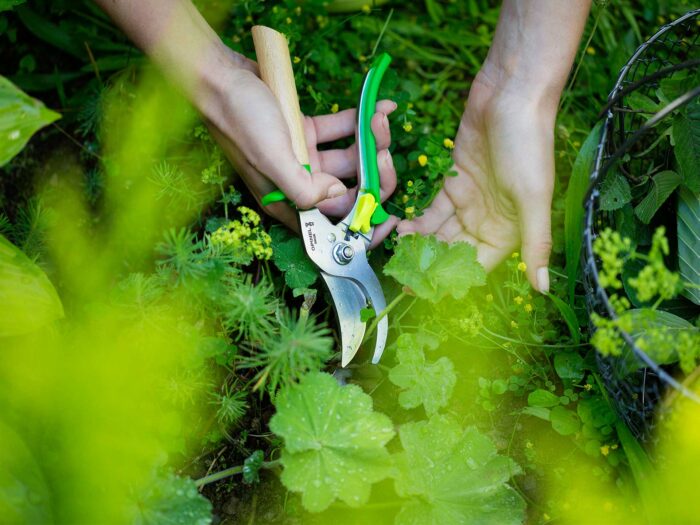
Image credit: Opinel
Perennial pollinators
As Britain’s population of butterflies and bees continues to disappear at alarming rates, doing everything we can to help them in our own spaces is imperative. Plantlife reports that “we’ve lost nearly 97% of flower-rich meadows since the 1930’s and with them gone are vital food needed by pollinators, like bees and butterflies”.
Pollinators (insects and birds that share important plant material) are an integral part of any ecosystem, filling your garden with perennial plants for pollinators, will help support this natural ecosystem and bring a riot of beauty and colour to your garden. In the early season you can add English bluebells, grape hyacinth and primrose, mid season think about lavender, heather and verbena and in the late season echinacea, sunflowers and honeysuckle.
To additionally help pollinators, provide water in the garden and nest sites for wild bees and don’t forget night-time creatures like bats and moths. Add night-scented flowers like common jasmine and tobacco plants to attract them. It doesn’t matter what size your garden is, you can bring pollinator planting into your thinking, from full borders to boxes.
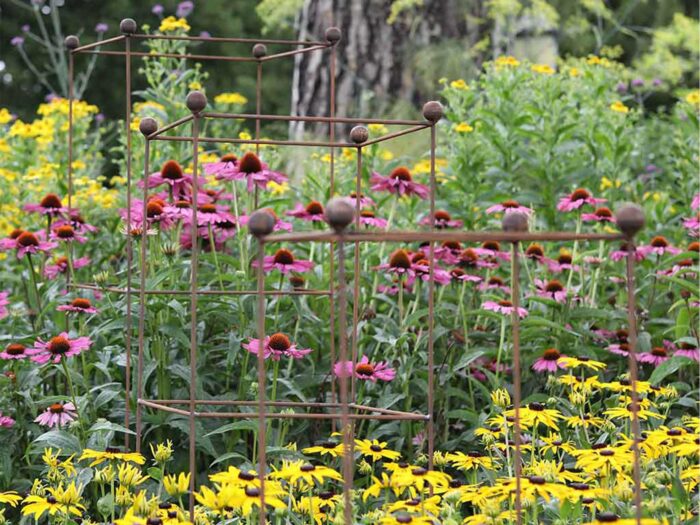
Image credit: Agriframes Tower
No mow or lawn-less gardens
The lawnmower was invented in 1830 by Edward Budding, but it wasn’t until the 1890s that they really hit the mainstream with mass production. After over a century of dedicated grass care, it may be time to forget manicured lawns and leave them in the past. Set up by Plantlife, the No-Mow May movement began as a way of helping struggling pollinators and creating healthier lawns. Forgoing the mower in May (although giving it up completely is preferable), will help boost spring wildflowers and give more time for plants to seed. This new ethos means weeds are welcomed and help support the ecosystem rather than being seen as an eyesore. To further increase your lawn health avoid using fertilisers, herbicides, moss killers,
It’s worth considering that lawns take up a lot of water, and as we increasingly experience more drought-like conditions, going lawn-free is another option. Think about replacing your lawn with meadow, or widening your borders and filling them with plants. A lawn-free garden will help support the environment, and done well, can create a real design statement.
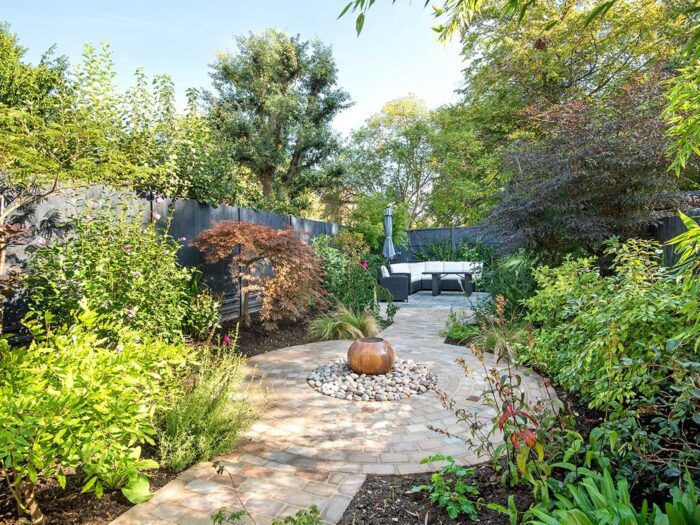
Image credit: Terra Firma Landscapes
Natural swimming ponds
How can anyone forget Nina and Dan Rowland’s phenomenal Grand Designs’ biodiverse build in Chichester, with its showstopper crystal-clear natural swimming pond? Not only beautiful, a natural pond will support wildlife and biodiversity in your garden and once properly set up require minimal maintenance. As with conventional pools, your pond can have a shallow and deep end, perfect for daily swims and a freshwater swim beats a chlorinated swim hands down.
But, how does a natural pond actually work? Natural swimming ponds are filtered organically and require no chemicals or chlorine to maintain. The plants they’re filled with filter out pollutants and excess nutrients and create a thriving ecosystem. Water lilies, bulrushes, cattails and water iris all work well. Add in a mix of algae, floating plants, submerged plants and emergent or marginal plants (which are added at the edges to stabilise the shoreline) for the best balance. Waterfalls are not just a design feature, they help oxygenate the water and keep algae growth at an optimum level.
If you’re thinking of installing a natural swimming pond experts Gartenart, David Pagan Butler and Natural Swimming Pools (who worked with Dan and Nina) are all great ports of call.
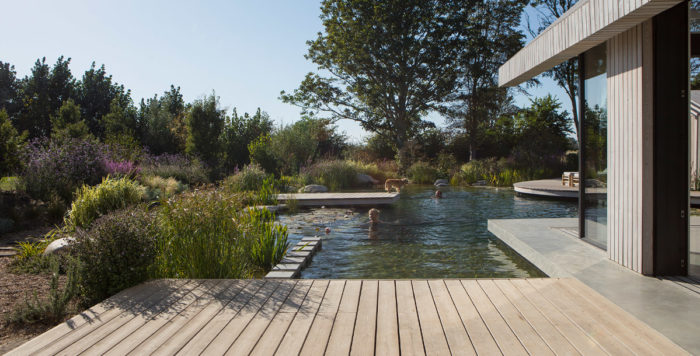
Image credit: James French
Focused lighting points
If you’ve been guilty of hastily stringing up some fairy lights or dotting a few candles around while sitting out in the darkness, treating your garden to a fully focused lighting scheme will transform it and help you get so much more enjoyment out of it. When designing your lighting you will need to think carefully about the environment, you don’t want to add too much artificial lighting after dark so as not to harm the nocturnal wildlife.
Avoid flooding your garden with light and look at illuminating certain areas. Choose downlights rather than harmful uplighting which have a harsh glare. Hoods and shields can help soften the light. There are increasing dark sky areas in the UK helping to reduce light pollution, so check your area before you install a lighting scheme. For alfresco dining, adding soft lighting above your table and around its perimeter and think about using a timer, so your lights are only on when you need them.
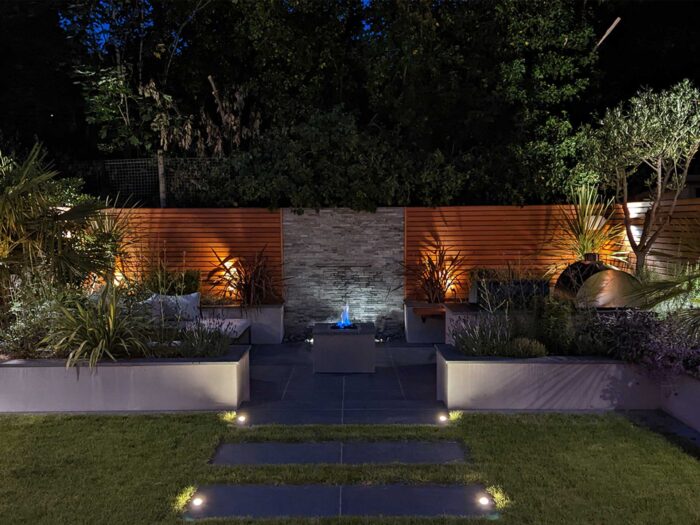
Image credit: TerraFirma Landscapes
Garden trend tech in 2024
There’s an app for everything now, and the garden is no exception. Smart sprinklers like Rachio 3 bill themselves as “worry-free watering” and they’re a great addition to your garden. The intuitive tech will tailor a very specific watering programme including plant type, soil type and sun exposure and work out an algorithm that means your garden is getting exactly what it needs. Interfacing with local weather stations, it has brilliant patented weather intelligence, like a rain, wind and freeze watering skip.
There are several useful gardening apps to try. RHS Grow, which combines over 200 years of trusted growing knowledge from RHS experts (you know you’re in safe hands with this one). Moon & Garden relies on ancient practise and helps you create an organic garden using biodynamics. Knowing what to plant in your specific soil will be the key to success in your garden, UK Soil Observatory will identify your area, while iScape will let you design your own garden layout using AI to visualise. The plans are all shareable, so it’s a great starting point if you’re calling in the experts.
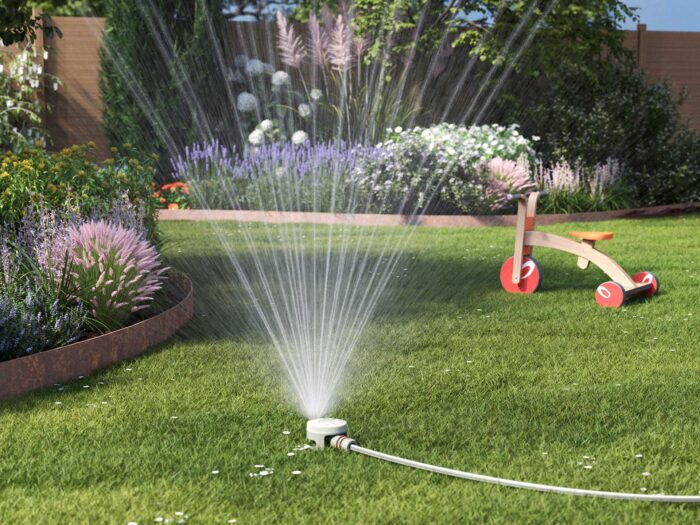
Image credit: Verve – B&Q
Alternative compost
2024 is set to see a government ban on peat compost for home gardeners in England, a welcome move for wildlife and environmental trusts. Peatlands are large areas of peat (which is made up of partially decomposed plants) and over years they’ve been extensively mined. Peat makes for a great fertiliser for gardens and helping cultivate ideal growing conditions and has been used as fuel for fires, but this comes at a huge cost for the environment. Peatlands are a nutrient rich haven for wildlife that holds a lot of water and carbon. In fact, The Wildlife Trust say that “there’s around 3.2 million tonnes of carbon in UK peatlands”. When it’s mined this will be released into the atmosphere, when it’s left alone it will be stored and be essential for both plants and wildlife.
Only an estimated 13% of the UK’s peatlands are in a near-natural state and the government has announced that the ban will “contribute to efforts to achieve our ambitious target of restoring 35,000 hectares of peatlands by 2025 and wider efforts to achieve net zero”. So, what can you use as an alternative? Creating your own compost is both an environmentally-friendly and cheaper garden trend for 2024. B&Q’s 10 litre Verve Submergeable Composter (pictured) has holes in it to let worms crawl in and break down the scraps. The nutrients will then be drawn out to the surrounding soil.
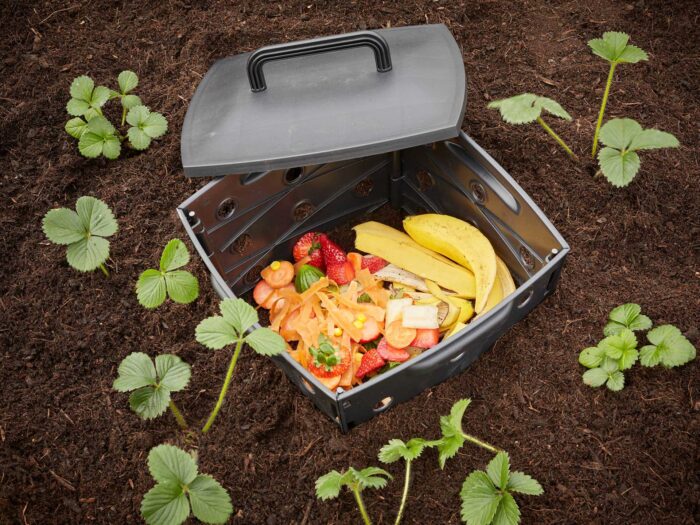
Image credit: Verve – B&Q
Alfresco bathing
Outdoor living is life changing and while we’ve seen a rise in garden rooms and outdoor living rooms, alfresco bathing is a garden trend for 2024 that can take your relaxation up to another level. In an increasingly busy world more time, rich experience and getting back to nature are our real luxuries and outdoor bathing ticks off them all and helps you create the feeling of being in Bali in your own back garden.
Outdoor bathrooms can be as simple or as complex as you want them to be. From a Victorian tub with a hose connecting to a tap, to a fully installed shower plumbed into your hot water system. Consider privacy carefully. Maybe you’ll need screens or surround the bath or shower with tall plants. Or take inspiration from the brilliant Aller Dorset, who have created a fully-tiled free-standing outdoor bathroom.
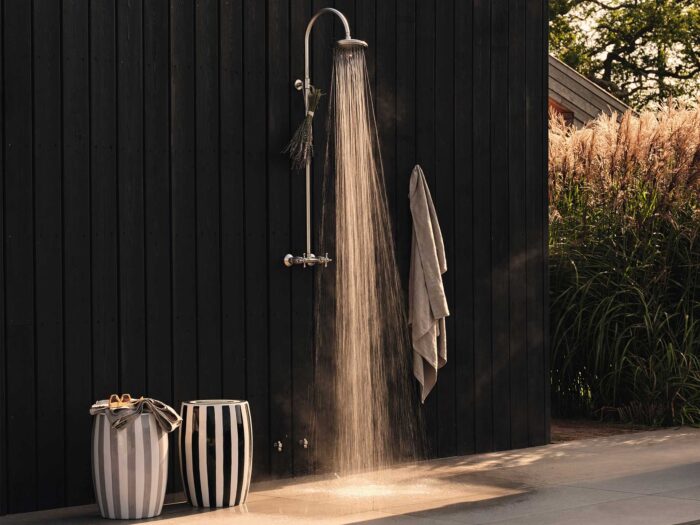
Image credit: Oka

